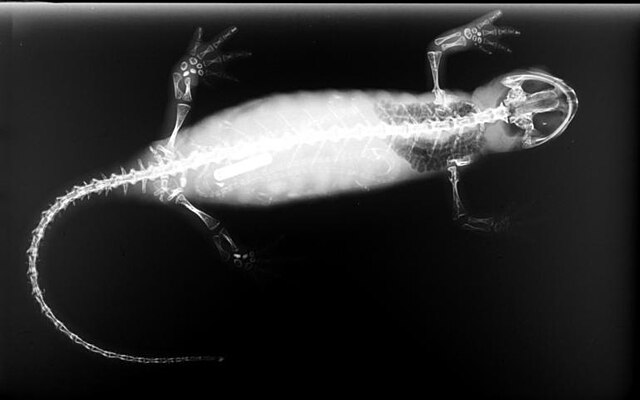Amphiuma is a genus of aquatic salamanders from the United States, the only extant genus within the family Amphiumidae. They are colloquially known as amphiumas. They are also known to fishermen as "conger eels" or "Congo snakes", which are zoologically incorrect designations or misnomers, since amphiumas are actually salamanders, and not fish, nor reptiles and are not from Congo. Amphiuma exhibits one of the largest complements of DNA in the living world, around 25 times more than a human.
Amphiuma
Musculature of upper and lower Jaw in Amphiuma. Specimen from the Pacific Lutheran University Natural History collection, dissection and photos by Misty Lang and Nina Thach
Amphiuma lung with a magnified portion of the lung to show the amphiuma vascular tissue.
Amphiuma digestive tract. Specimen from the Pacific Lutheran University Natural History collection, dissection and photos by Misty Lang and Nina Thach.
Salamanders are a group of amphibians typically characterized by their lizard-like appearance, with slender bodies, blunt snouts, short limbs projecting at right angles to the body, and the presence of a tail in both larvae and adults. All ten extant salamander families are grouped together under the order Urodela from the group Caudata. Salamander diversity is highest in eastern North America, especially in the Appalachian Mountains; most species are found in the Holarctic realm, with some species present in the Neotropical realm.
Salamander
X-ray image of salamander
Sirens have an eel-like appearance.
Rough-skinned newt







